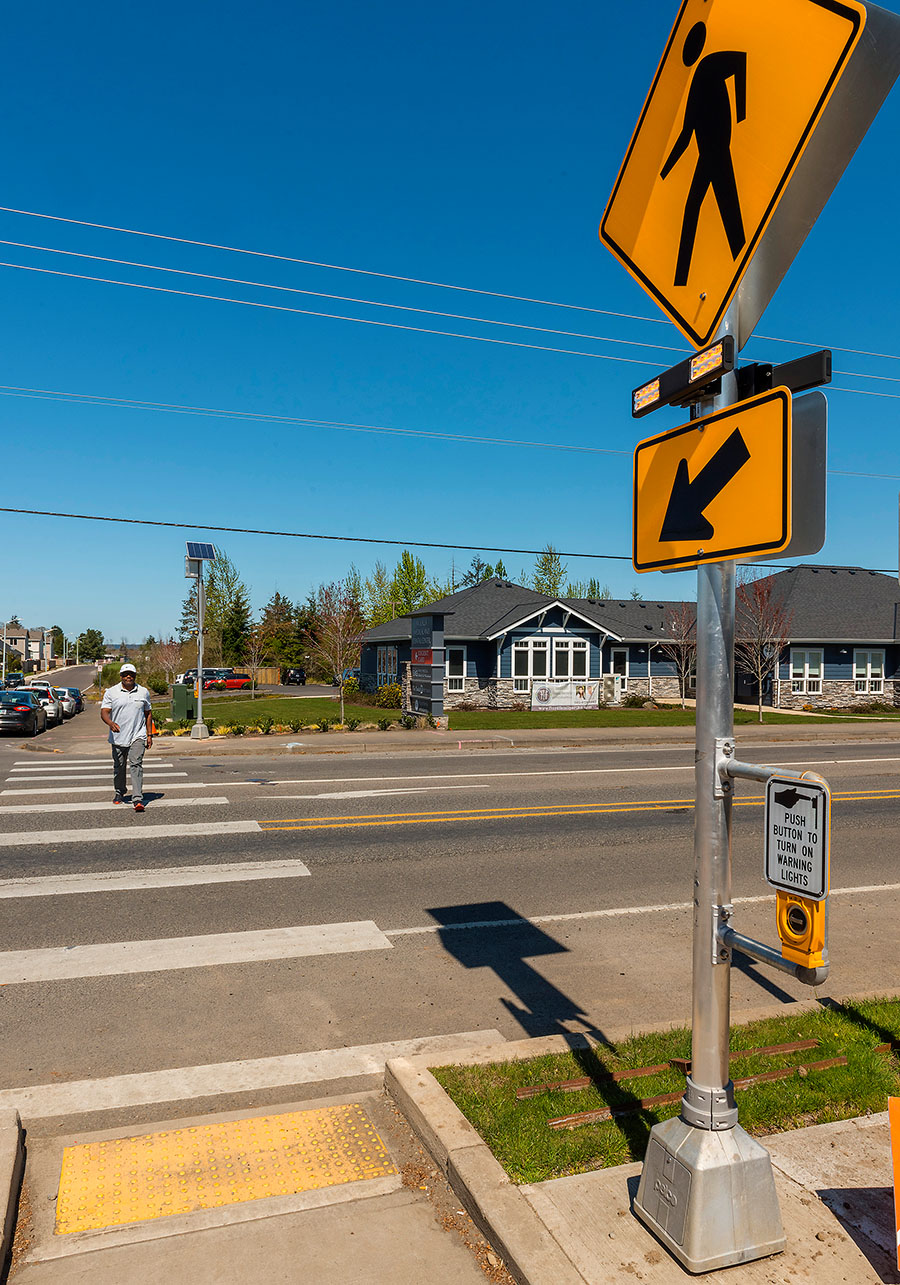
States Innovate!
Crowdsourced Data Helps Kentucky Clear Vehicles on Shoulders
Vehicles remaining on shoulders increase crash risk, particularly when present for extended periods. The Kentucky Transportation Center used free data from a navigation app provider to confirm that more than 35 percent ofvehicle-on-shoulder alerts stayed active for at least 30 minutes, and another 12 percent for at least 1 hour. The study also found a strong correlation between vehicles on the shoulder, congestion, and crashes.
The Kentucky Transportation Cabinet’s traffic management center operators are using the same free data to view real-time heatmaps of vehicle-on-shoulder events, detect likely abandoned vehicles, and share this information with law enforcement patrols. This effort helps clear vehicles from the shoulder and improve travel safety.
States Take Steps to Improve Pedestrian Safety
The Alabama Local Technical Assistance Program (LTAP) Center is working with underserved communities to identify pedestrian facility improvement needs that will lead to safer walking environments. The Alabama Transportation Assistance Program at Auburn University, which manages Alabama’s LTAP Center, partnered with a nonprofit organization called The Fifty Fund, the Alabama Department of Transportation, and FHWA’s Alabama Division to form the Safe Transportation for Every Pedestrian in Underserved Communities (STEP-UC) team. Members of the STEP-UC team conduct walkarounds to identify areas where improvements are needed, such as gaps in sidewalk continuity, potential crosswalk locations, and traffic control devices. The resulting report is then provided to local governments. Read more about STEP-UC in the FHWA Center for Local Aid Support Newsletter.

Oregon is installing more rectangular rapid flashing beacons to help alert drivers to the presence of pedestrians.
Credit: Oregon Department of TransportationThe Oregon Department of Transportation (ODOT) plans to install more than two dozen rectangular rapid flashing beacon (RRFB) devices over the next 2 years. RRFBs, one of the seven safety countermeasures included in the STEP initiative, allow pedestrians, bikers, etc. to activate flashing lights that alert oncoming motorists to their presence. ODOT created three videos to explain the advantages of RRFBs, how the agency chooses the sites for their installation, and how to use them.
According to an ODOT news release, the agency started using RRFBs on roads in the Portland area a decade ago and has found them to be an effective tool for improving safety on busy corridors, especially in areas with long distances between traffic signals. ODOT said the RRFBs provide an additional layer of safety and assurance for anyone crossing a busy road, and they play an especially important role in economically disadvantaged neighborhoods, which are areas with typically higher rates of pedestrian injuries.
Michigan Dashboard Tracks Bridge Bundling Pilot Program
The Michigan Department of Transportation (MDOT) launched an online dashboard that will allow the public to see progress on local agency bridge bundling projects to be let in 2022. The tool coincides with a first-of-its-kind pilot program for MDOT that bundles the replacement of 19 local agency-owned bridges into one $24 million contract. The dashboard will provide project updates and show percent completion, detour routes, and other information for each bridge project. Project bundling will streamline design and construction coordination and permitting, while rapidly improving bridge conditions on local routes around the State.
Pennsylvania Tool Aggregates TSMO Data
The Pennsylvania Department of Transportation (PennDOT) is bringing internal and external data sources together to improve transportation systems management and operations (TSMO) decisions. PennDOT’s TSMO Performance Program and Traffic Operations Analytics Tool combines the agency’s crash reporting system and road condition reporting system with crowdsourced roadway incident and speed probe data. PennDOT reports that the data aggregation increased the accuracy of incident timeline milestones and allowed for a data-backed “congestion pie chart” that helps the agency and its planning partners better understand the causes of congestion on certain roadways, allowing for more tailored solutions. According to PennDOT’s news release, the program has already led to safer work zone solutions and improvements in how it communicates via variable message signs. PennDOT’s program was the overall winner of the 2021 National Operations Center of Excellence TSMO Awards.
Build a Better Mousetrap 2021 Booklet Available for Download

The Federal Highway Administration’s Local Aid Support team continues to recognize local agencies who have successfully used innovation to solve transportation challenges through the Build a Better Mousetrap program. The 2021 Booklet of Local Innovations is a showcase of innovations that improved safety, saved time and money, and improved efficiency for communities across the country.
Notice: The U.S. Government does not endorse products or manufacturers. Trademarks or manufacturers’ names appear in this article only because they are considered essential to the objective of the document.
Recommended Citation: U.S. Department of Transportation, Federal Highway Administration - Washington, DC (2021) Innovator Newsletter, January/February 2022, Volume 15 (88). https://doi.org/10.21949/1521806



